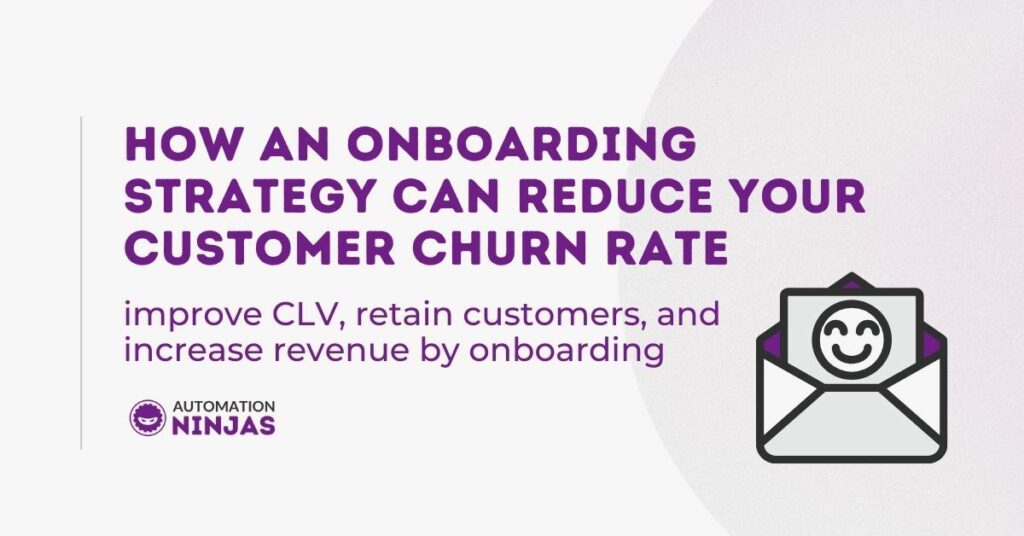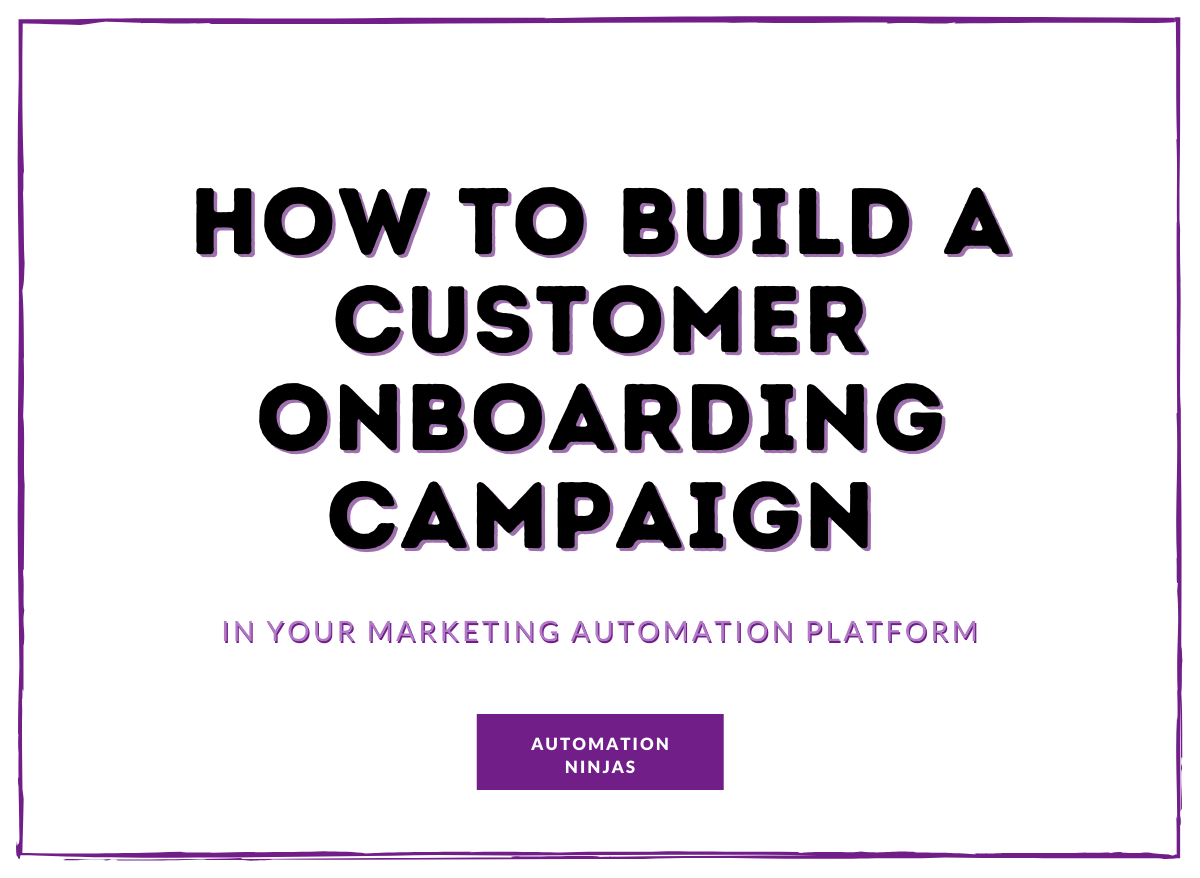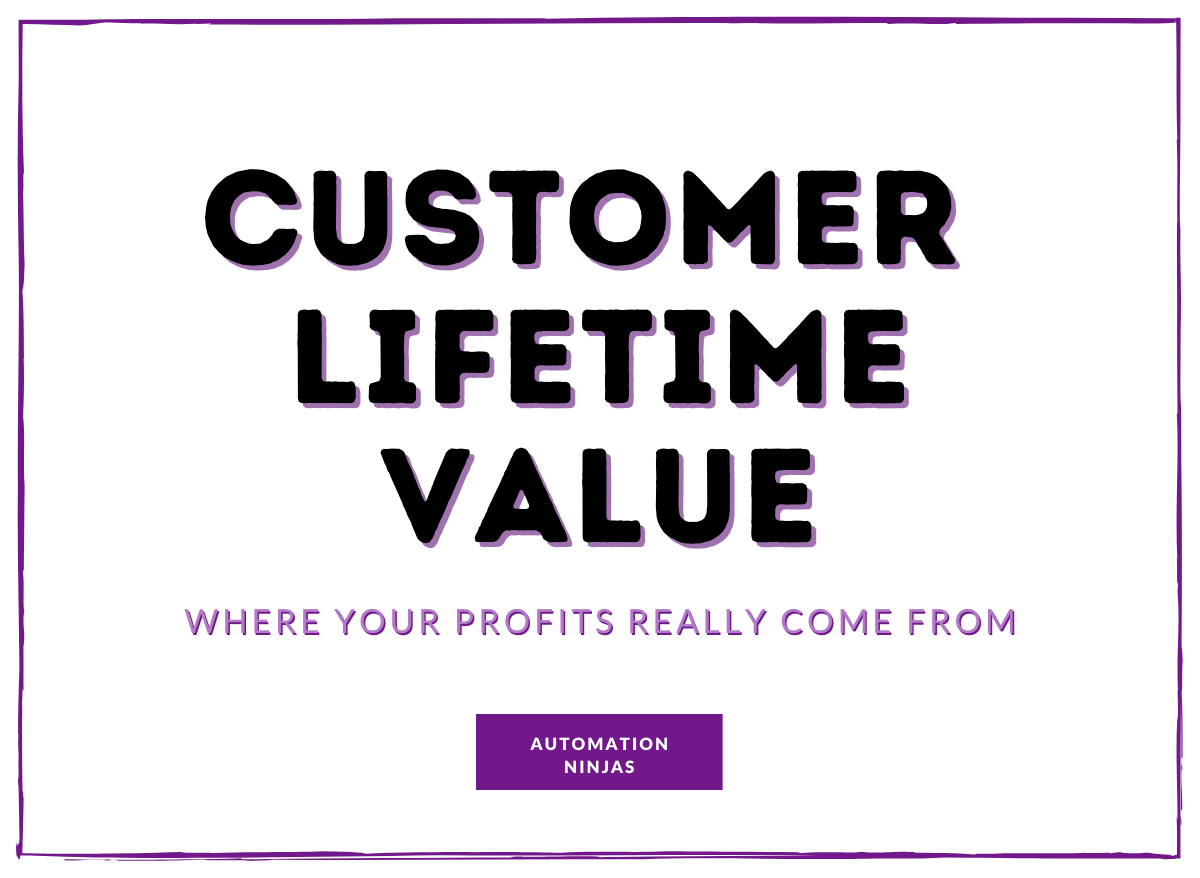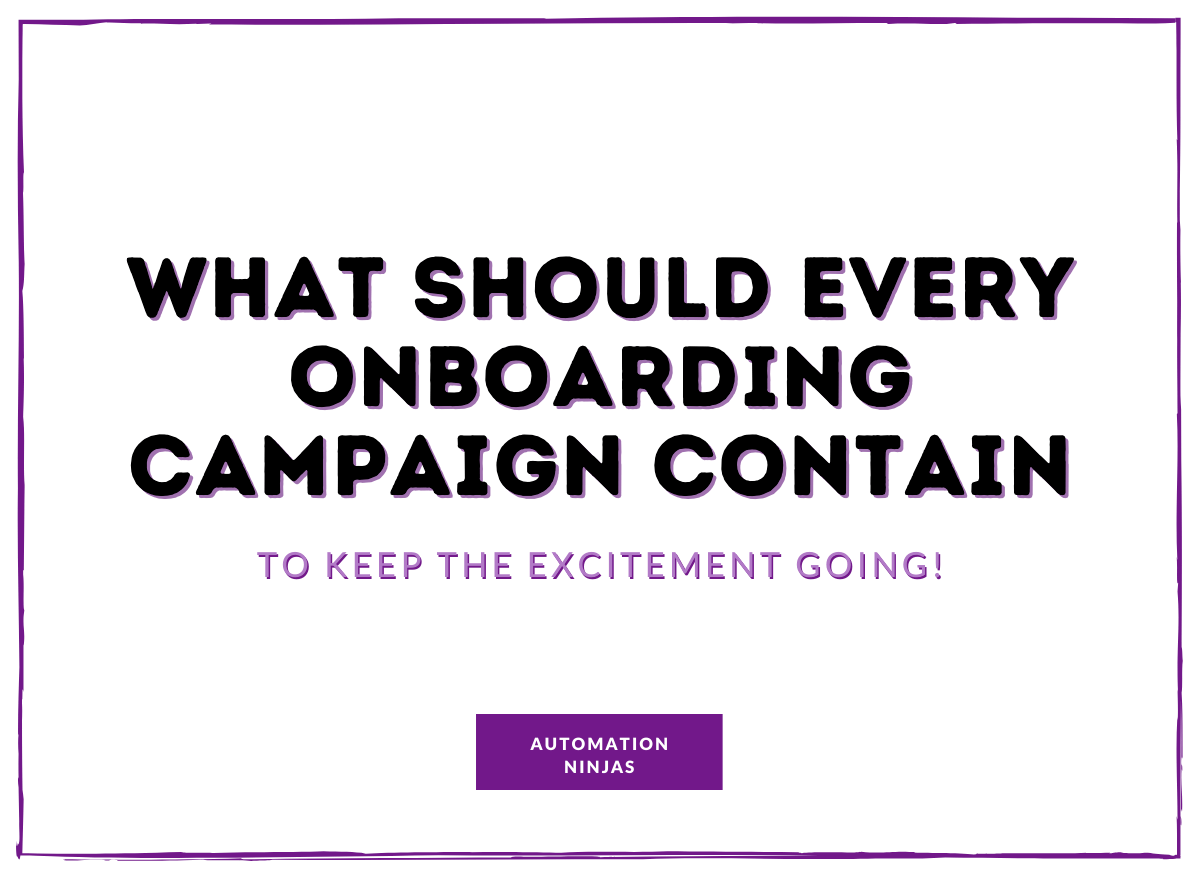When it comes to marketing efforts, many businesses focus on new leads. The acquisition of them and the conversion into a customer. But, what happens when they become a customer? Your onboarding strategy should have just as much attention as your lead generation strategy.
Why? Because the impression you give once a customer has parted ways with hard-earned cash for your product or service, will be one that is lasting. Every interaction that comes after will be influenced by how you dealt with them when they made that commitment. And it is a commitment. It's a journey they embark on with you for, hopefully, a very long time.
Therefore, get your onboarding strategy right, and you could reduce your customer churn rate & increase your customer lifetime value.
Let's explore that more in this blog...
New Customers vs Retention
Did you know that increasing customer retention rates by just 5% can increase your overall profits by 25% to 95%?
Plus, it’s estimated that it’s 600-700% more expensive to acquire new customers than it is to keep your existing ones.
Wow! Those numbers are pretty staggering.
As I mentioned earlier, we know full well that a lot of business owners are guilty of chasing the next new and shiny thing. Spending the majority of their time and budget trying to get new leads and customers.
Of course, new leads are important. However, these statistics demonstrate perfectly why it’s so important to keep your existing customers rather than constantly chase new ones.
Creating a strong onboarding strategy is just one of the ways you can WOW your existing customers, keep them happy and increase your profits.
What exactly is a churn rate?
Firstly, it’s important that you understand exactly what a churn rate is.
It sounds a little gross, but really it just refers to the number of customers you are losing over a specific time period.
You might also see it referred to as customer retention.
It can seem like a bit of a scary metric, however it’s also an incredibly important one to understand.
If you don’t know how many customers are leaving your business, or not returning, then you won’t know how your churn rate is impacting your overall revenue. Moreover, you won’t be able to implement improvements in order to reduce the turnover rate.
You can calculate your churn rate by dividing the number of customers that you started with in the last quarter by the number of customers that you lost last quarter. The resulting percentage is your churn rate.
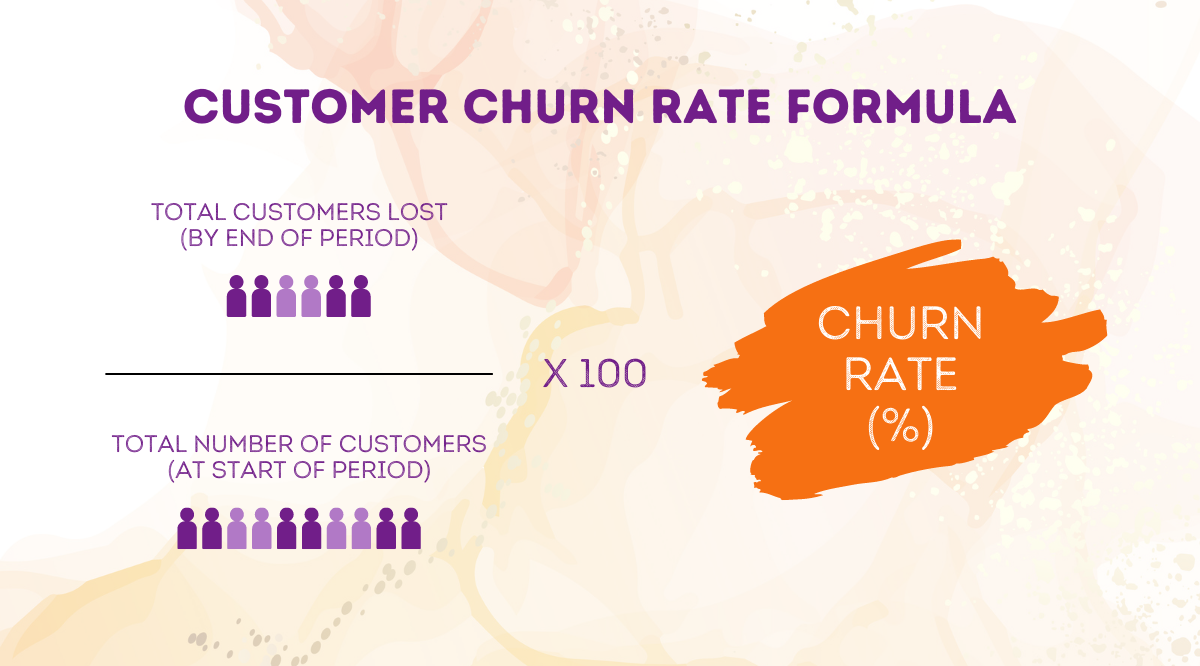
Once you’ve figured out your churn percentage, it’s time to figure out how to reduce it.
What exactly is an onboarding strategy? And how to use it to WOW your customers...
An onboarding strategy is part of the WOW stage. It’s all about delivering exceptional customer service and ensuring that your new customers are cared for just as well as yours leads.
“Love your brand new customers as much as you did when they were a lead." Kenda Macdonald
Simply put, onboarding is a nurture series for new customers. It’s the steps you take to get your customers up and running when they buy from you.
Overall, an onboarding campaign is a structured series of emails or automated actions that you send out to new clients to get them started on the right foot.
It is a very profitable exercise if done correctly. One of our star clients, New Zealand Natural Clothing converts 16.8% of their new clients into a second sale simply with a great onboarding campaign, and then a further 10% further into a 3rd sale.
In order to understand how much money you can spend on your onboarding campaign you will need to understand your Customer Lifetime Value (CLV).
You can work this out using the following formula:
The amount of time you retain customer x (how much they spend with you - the cost of acquiring the customer/keeping them)
Related content: Successful Customer Onboarding Strategy & How to Upsell, Cross-Sell & Downsell
The sales funnel: post-purchase
As you might have figured out, the onboarding sequence comes after a customer has made a purchase from your company.
You’ve probably seen this sales funnel before, it’s often paraded about by marketing experts.
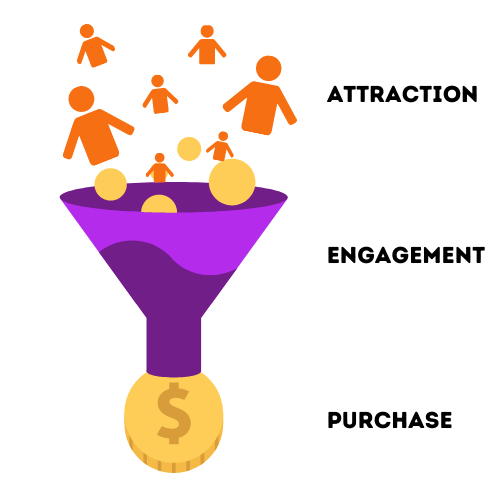
Oh, but wait... what is that?
Yes, that’s right, despite the fact that many businesses like to forget their customer after they make a purchase, there are actually a few more steps to ensure that you wow and delight your customers.
Your work does not end at the point of purchase. In fact, if those earlier stats are anything to go by, this is where the really important work begins.
The end of the sales funnel looks a little like this:
- Purchase
- Retain
- Loyalty
- Attrition/Re-engagement
The onboarding strategy really comes into play from the ‘retain’ stage onwards.
Businesses tend to be very communicative up until the point of purchase, but fail to keep the excitement levels as high post-purchase.
It’s at this point that our onboarding strategy comes into play, in order to reduce the churn rate.
Onboarding and the second moment of truth...
These days more people are more familiar with Google’s Zero Moment Of Truth. It’s the moment when a potential customer realises that they have a problem that needs solving and starts their online research.
However, it is the original 2005 Proctor & Gambles ‘moments of truth’ that we are interested in when it comes to onboarding. Customers are not loyal to you, they are loyal to their needs at that particular moment.
1. First Moment of Truth (FMOT): when a customer first ‘picks up’ your product/service. These days this is more likely to be in an online shopping card than in person.
2. Second Moment of Truth (SMOT): when your customer first ‘takes home’ your product/service and uses it.
The SMOT is our impact point, and it’s when we really have the opportunity to help ensure that the memories of our customers' purchases are encoded positively.
When people buy from us, their excitement levels are high, however over time these have the capacity to decrease if we don’t keep the hype going.
Without Onboarding & Nurture:
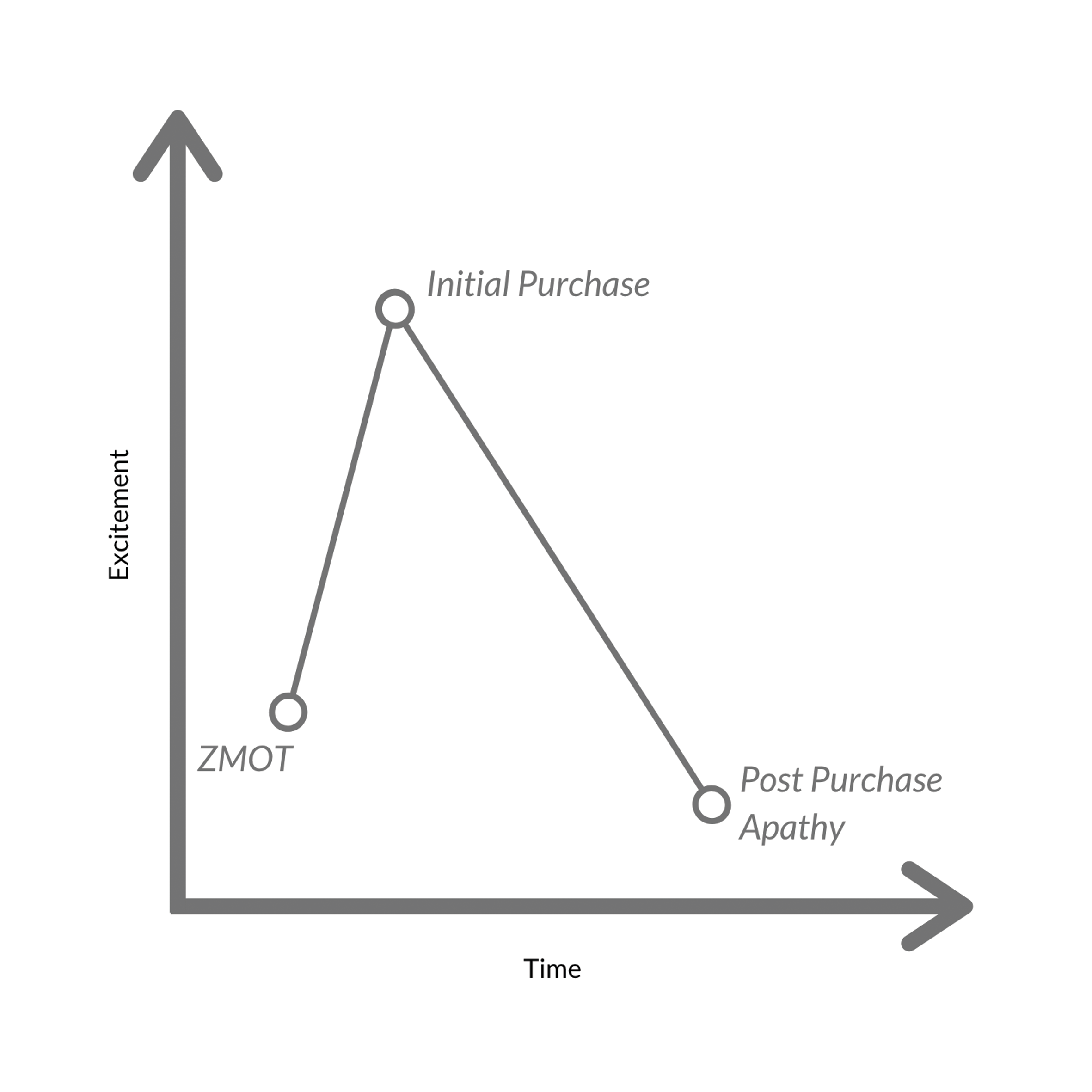
With Onboarding & Nurture:
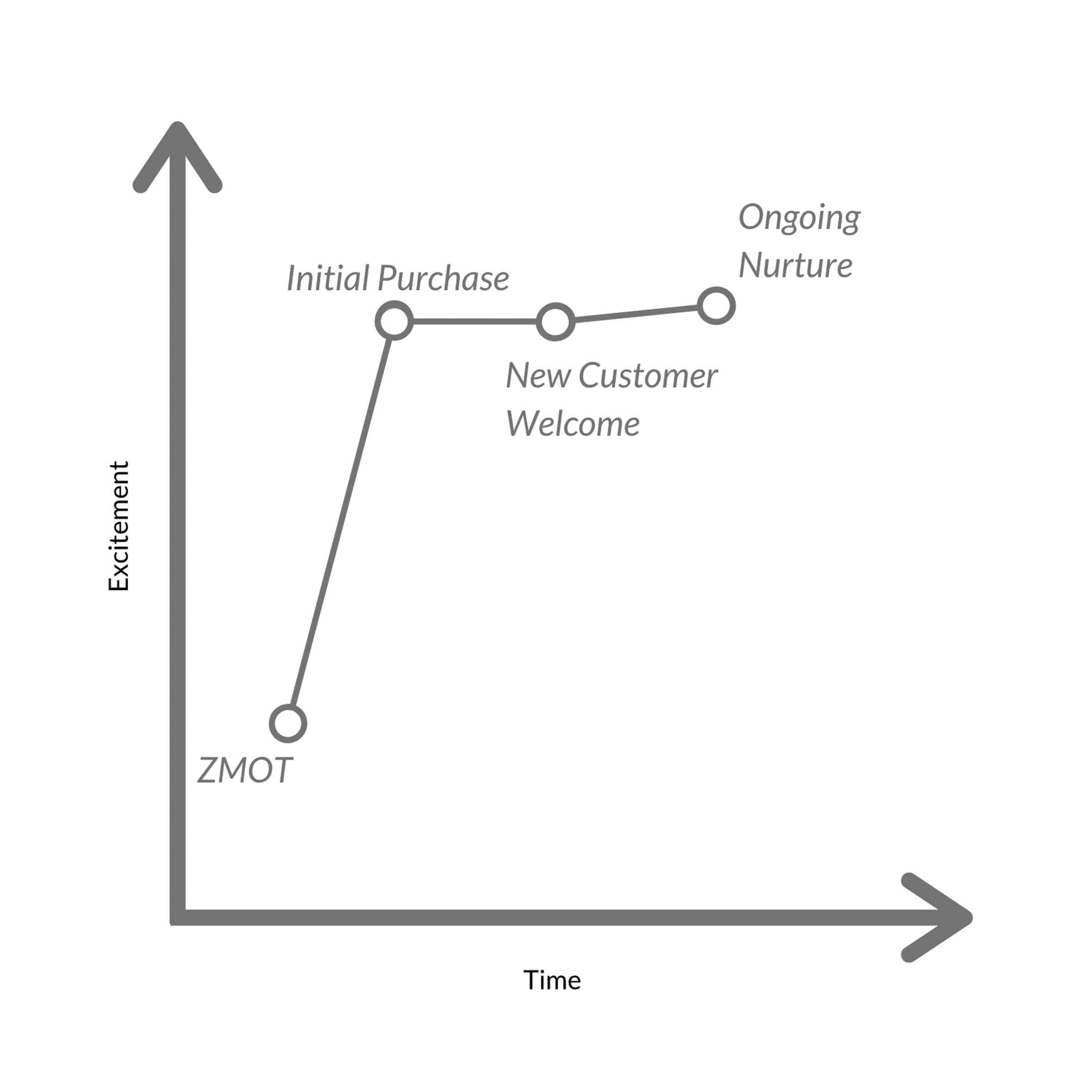
Contrary to popular belief we do not encode our emotions at the time of purchase, but we corrupt our own memories post-purchase and feed that back into the purchase decision.
If the onboarding process is fantastic then we will remember the purchase decision as really great - and our fallible brains will smooth over any bumpiness that occurs.
However, if we don’t create a positive post-purchase experience, then our customers are more likely to remember and encode the negative experience - and regret their purchase decision.
As businesses we need to use the onboarding campaign to keep the happy purchase hormones high, excitement levels up and ensure that the second moment of truth is a wholly positive experience that is encoded as such in the brain.
The Consumption Moment...
By leaning in on the consumption journey that we know customers go through, we can anticipate what they are going to need at each stage.
Take these steps and plan out how they would be relevant to you and your product and service. The consumption moment can be split into the following:
1. Research: What do they need to know?
What information do your customers need to know at this point in time? This may be as simple as the next steps, and go all the way through to detailed plans, instruction manuals and time scales. Set their expectations and make the next steps very clear for them.
2. Implementation (usage): What do they need to do to get it implemented?
Purchasing your product or service does not solve the problem, you now need your customers to do something. For example, if you have a membership , joining will not solve your members problems, they now need to take action.
Could there be any hurdles for your customers?
What actions need to happen?
How do you get your customers in a consumption routine?
Remember that customers who use the product are the ones that tend to value it, and they are the ones who stick around.
3. Proving: What are their goals?
Your customers want to see a return on their investment, proving to themselves that it was worth the purchase.
How do you get your customers to prove to themselves that this was the right decision?
Can you get them to attain success?
Are there quick wins you can help them see?
4. Optimisation (owning): How can you help them make it theirs?
How can your customers get the most out of their purchase?
This is your chance to help them see how they can squeeze out every ounce of value out of your product or service, and show them how to enhance the experience.
5. Enjoyment
Finally, when your customer has spent some time using your product or service, you should mirror your enjoyment. You can inspire them with testimonials and case studies who are doing awesome things with your product or service.
By taking your clients and consumers through amazing onboarding you can bag yourself customers for life.
Each of these steps may happen very quickly, especially in B2C purchases. However, B2B can move a lot slower and it’s impossible to get to the enjoyment phase without first going through the others.
These are the stages that we must move our customers through in the onboarding process, and it’s going to be really difficult to achieve this in the one email that so many businesses think sufficient.
How to keep your customers in the consumption moment?
In order to draw out the consumption moment, and eek out the excitement you will need to research the next steps. Your onboarding campaign may provide the following:
- Best practices - everybody wants to do it the ‘best’ way
- Community - make them feel part of an in-group
- Implementation - get them involved in a challenge to get started
- Inspiration e.g. case studies, testimonials - show them what other people have achieved and how they can too
- How tos - and bonus points if its via video
By keeping customers in the consumption moment for longer, we keep those happy hormones that come along with a purchase HIGH. This is how an onboarding strategy keeps customers happy, and keeps the churn rate low.
We reduce the risk of dissatisfaction, and ultimately this leads to a more profitable and long-term relationship with our customers.
Need help with your onboarding campaign?
You know it’s really important, but you just don't have the time to do it.
That’s okay, we can help. Contact us today:
Get in touch!


